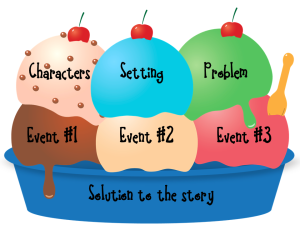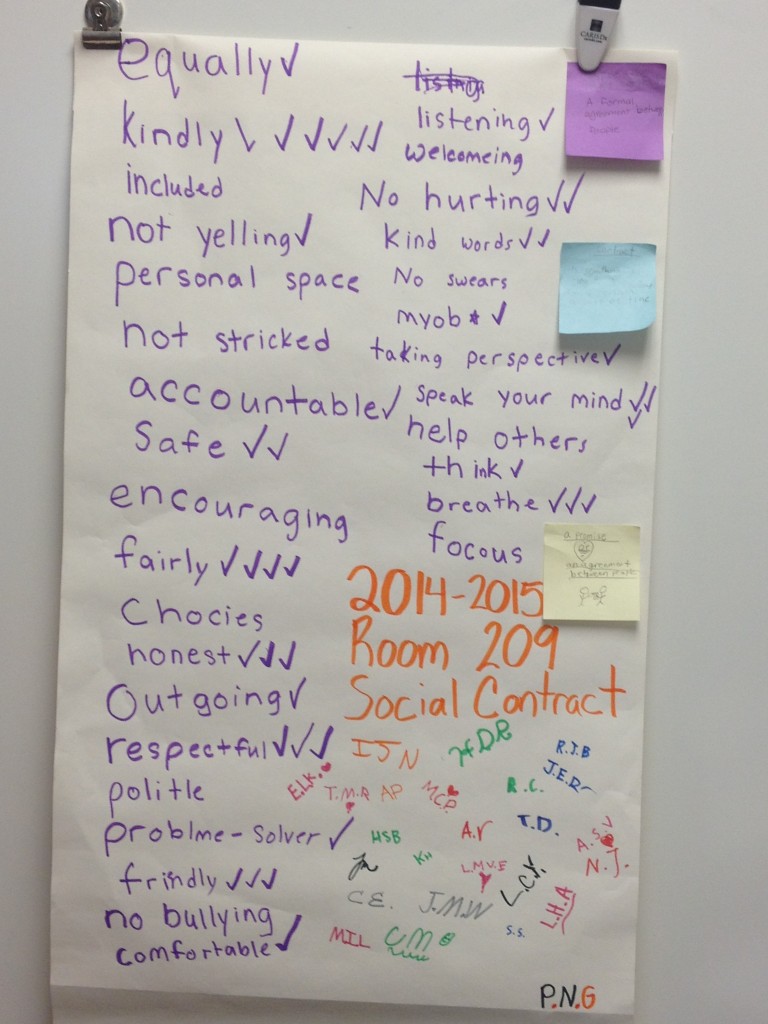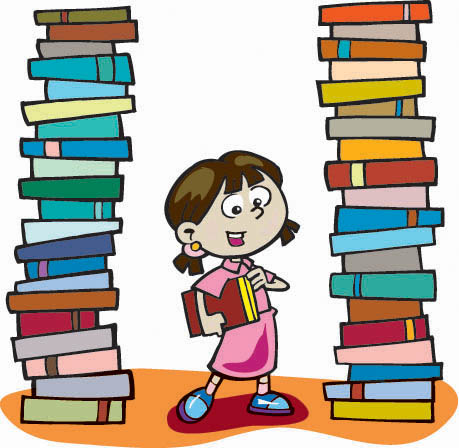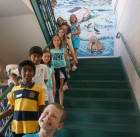Viewing: Class Updates
December 22, 2014
Narrative Elements, Connections to Text
Well hello! It’s been some time since I’ve posted an update here, so please accept my apologies. A side effect of having easy access to the Chromebook laptops and the student Gmail accounts is the reality that I tend to do more of my communication with students through those means (such as emailing assignments and information), rather than posting messages here. A reminder: Parents should ALWAYS have the ability to log-in to their children’s APS gmail accounts. If you need the username or password for your child, please let me know.
 In recent weeks, we finished our first major reading unit, which focused on identifying and explaining the narrative elements in a text. These elements, which we sometimes described as being ingredients making up an ice cream sundae, represent the different parts of a narrative story. While we did work in class on identifying these elements, I found (as I normally do) that this was a pretty straight-forward task for the students. Instead, we focused more on supporting their responses with well-selected evidence from the text. For example, if we wanted to describe the wolf in Little Red Riding Hood as being “sneaky,” we’d look to the text to find evidence that supports the opinion that the wolf is, in fact, sneaky. This is a year-long focus, as kids need to support their responses with evidence in any number of situations, ranging from narrative elements to connections to predictions. In fact, you may often see the same requests made on many math homework worksheets, on which kids need to support their reasons why they agree or disagree with an answer or how they solved a given math problem. When your fourth grader brought home his or her literacy binder recently, you hopefully had the opportunity to review the character traits response to The Josefina Story Quilt, in which students planned their responses on a graphic organizer, wrote a draft response, and later revised their work based on my written feedback and an in-class review of how to craft a well-supported short-answer response.
In recent weeks, we finished our first major reading unit, which focused on identifying and explaining the narrative elements in a text. These elements, which we sometimes described as being ingredients making up an ice cream sundae, represent the different parts of a narrative story. While we did work in class on identifying these elements, I found (as I normally do) that this was a pretty straight-forward task for the students. Instead, we focused more on supporting their responses with well-selected evidence from the text. For example, if we wanted to describe the wolf in Little Red Riding Hood as being “sneaky,” we’d look to the text to find evidence that supports the opinion that the wolf is, in fact, sneaky. This is a year-long focus, as kids need to support their responses with evidence in any number of situations, ranging from narrative elements to connections to predictions. In fact, you may often see the same requests made on many math homework worksheets, on which kids need to support their reasons why they agree or disagree with an answer or how they solved a given math problem. When your fourth grader brought home his or her literacy binder recently, you hopefully had the opportunity to review the character traits response to The Josefina Story Quilt, in which students planned their responses on a graphic organizer, wrote a draft response, and later revised their work based on my written feedback and an in-class review of how to craft a well-supported short-answer response.
We’re now starting to focus on making connections to text. In class, we read a story called One Green Apple (a terrific story, if you’re not familiar with it), and you may remember a recent homework assignment in which students had to write about different connections they made to the text. In class, we looked at the difference between a coincidental connection (I, too, have been to an apple orchard!) vs a deeper, more meaningful connection (I, too, have felt out of place when everyone around me spoke a different language than the one I spoke.) Right now, we’re focusing on making connections to feelings.
Our work with One Green Apple will also kick off our author study of Eve Bunting, who has written so many wonderful texts about a variety of meaningful topics. Her books often have many things to which kids can relate, while also introducing new concepts that are unfamiliar to many fourth graders. She’s a top-notch author!
Once again, thank you for your patience in waiting for an update, and I’ll try to post more regularly in the new year.
Posted in Class Updates|By Jon Moss
November 5, 2014
New Student Email Accounts and Chromebooks
![]() Today, students were excited (to put it mildly) to receive their own Avon Public Schools email addresses. We set them up as a class, and students sent test emails to me and to their classmates. These email addresses also enable Google Drive, which will allow for students to collaborate in and out of school on assignments, in addition to making some of our online homework assignments more secure. Students definitely haven’t learned everything, however. Over the next few weeks (months, really), we will learn more about how to use email, Google Drive, Chromebooks, and much more!
Today, students were excited (to put it mildly) to receive their own Avon Public Schools email addresses. We set them up as a class, and students sent test emails to me and to their classmates. These email addresses also enable Google Drive, which will allow for students to collaborate in and out of school on assignments, in addition to making some of our online homework assignments more secure. Students definitely haven’t learned everything, however. Over the next few weeks (months, really), we will learn more about how to use email, Google Drive, Chromebooks, and much more!
Students have their log in information written on post-it notes in their planners. (Plus, if your child has difficulty logging in, I have copies of their usernames and passwords and can help out over the weekend.
We spent a significant amount of time discussing proper email behavior. While we talked a lot about the SERIOUS, MAJOR topics, such as cyber bullying, internet safety, and the permanency of online communications, we also discussed email etiquette. We spoke about how to appropriately use the subject line, choosing how to include recipients, and more. As kids continue to use their new accounts, I will certainly continue to take advantage of teachable moments to extend these skills. Remember, using email isn’t just a technical know-how skill. It also includes new social norms, pragmatics, and problem-solving skills.
Here are a few things you might want to know about the email accounts and how I am managing them:
- As discussed in the Responsible Usage Agreement that students and parents signed in the fall, email accounts are being distributed to students in Avon Schools starting in gr. 4.
- Students can only send email to and receive email from other avon.k12.ct.us email accounts. (So you cannot email your fourth grader, nor can they email you. This is for privacy and safety reasons.)
- All emails (and other electronic communications within the Google system) are archived pursuant to federal law.
- I do have usernames and passwords for all student email accounts. (I told students this in advance of them choosing their passwords since I know some students may have preferred passwords that they use for many things but might not want to share with me.)
- I told students that they MUST share their username and password with their parents. (If they don’t, email me and I’ll share it.) No secrets here!
- When composing new messages within a web browser, it’s easy to send an email to another APS individual with the same first or last name that the user has started to type. It’s important to carefully select the RIGHT recipients.
- I take any sort of online teasing (up to and including cyber-bullying) very seriously. Kids, don’t test me on this.
- Kids may not set up their APS email accounts on any home device (such as an iPad) without parental permission. (Although some kids have their own devices, some parents may prefer that online communication stays on a family computer so they can supervise. That’s why I made this rule.) If parents are ok with this, then be my guest!
- Some teachers have prohibited non-school-related emails between students. I haven’t, because I think that social emailing is a good way to learn the “ins and outs” of email use and etiquette. We discussed how quickly social emails can become “spam” and an irritation to others. Students have been told that it’s up to their PARENTS to decide whether they can socially email classmates outside of school. Friendly emails are fine with me, but excessive social emailing can become an issue. Again, this is not something that kids have an innate understanding of, so we will need to teach these skills on an ongoing basis. (That’s why I don’t ban social emailing – so we can TEACH it, not just prohibit it.)
- Students are welcome to email me when they have questions or concerns. In the past, I’ve always CC’ed parents when I reply to students. But since you will have their usernames and passwords, I may not continue to do so. I explained to kids that there is one of me and 22 of them, so if I get inundated with emails, I will reply to urgent emails more quickly than to social emails.
Posted in Class Updates|By Jon Moss
October 20, 2014
Where am I?
I’m sorry to be out today, but it’s certainly for a good cause! Each year, I attend the CECA (Connecticut Educators Computer Association) to learn new methods for integrating technology into my instruction. I work hard to make sure technology is a valuable learning tool, not just a gimmick that gets tossed in. Each year, I come away from the conference with specific ideas that I’m able to put into practice immediately following the event. This year, I’m excited to be presenting at the conference about methods of using class websites to facilitate collaborative eLearning! See you all tomorrow!
Posted in Class Updates|By Jon Moss
October 2, 2014
Our Social Contract (Classroom Community – Part 2)
In a recent post, I wrote about how we work to build a cohesive classroom community in our room. In this post, I will share our classroom’s social contract with you, as well as explain how we help one another to live up to the contract. In early August, I attended the Capturing Kids’  Hearts workshop (which I described in the previous post). One substantial focus of the workshop was the concept of using a social contract. This document outlines how students want to be treated by teachers, how teachers want to be treated by students, how students want to be treated by one another, and how we all want to be treated by either during a conflict. After brainstorming descriptors over the first few weeks of school, groups of students shared out their ideas, and we made a master list as a class. As descriptors were repeated, we added checks to the list. We didn’t distinguish between the four categories I listed because it became apparent (by design) that the descriptions we found were applicable in all instances.
Hearts workshop (which I described in the previous post). One substantial focus of the workshop was the concept of using a social contract. This document outlines how students want to be treated by teachers, how teachers want to be treated by students, how students want to be treated by one another, and how we all want to be treated by either during a conflict. After brainstorming descriptors over the first few weeks of school, groups of students shared out their ideas, and we made a master list as a class. As descriptors were repeated, we added checks to the list. We didn’t distinguish between the four categories I listed because it became apparent (by design) that the descriptions we found were applicable in all instances.
I must tell you how very impressed I was by the depth of thought that the kids put into their brainstorming. As you can see from our social contract, some ideas were common themes in our discussion: kindness, fairness, honesty, respect, friendliness, safety, candor, patience, and more! All students chose to sign the contract as their agreement to try to live up to the document. (This wasn’t mandatory – everyone CHOSE to get “on board” with the contract.)
One reminder that I give to the class is that we will not be perfect in following the contract. There are days when we all make mistakes, and what’s important is that we work to make the best choices we possibly can, rather than being perfect. The word “accountable” only came up twice, but I think we’ve found that it’s become one of the most important words in the contract as it’s been put to use.
When students (or I, for that matter) don’t live up to the social contract, we use the document to help us to problem solve. Rather than discussions taking the tone of “You are breaking the rules. You may not do that.” or “You’re not allowed to take things of ___’s desk.” we can instead refer back to the social contract. Conversations have a more positive tone, such as: “Billy, we all agreed to follow the social contract so that everyone can learn in a comfortable, safe environment. We agreed to treat each other kindly. You signed this contract, and we all need to work hard to be successful. When you _________, do you think it helped _______ to feel respected? … How could we help ____ to feel respected?” Notice how I use words from the contract in that example – it’s a document that the kids generated, so they have a great sense of ownership over it. They want to live up to the social contract.
The reality, of course, is that we won’t always be successful. Part of building a classroom community involves empowering students to help one another to be successful. When they see another student not making good choices, they’re encouraged to use a gesture – a wiggling fist, with the thumb extended upward – to help their peer to make a better choice. This isn’t a way of tattling on a classmate to me, indeed, I tell the kids that this works best when I have no idea that it’s happening. The best metaphor is a baseball connection. When a player is having a rough time at a game and gets in the umpire’s face to scream, his fellow players run up and often hold him back and bring him back to the dugout. Why? Because they want to keep their teammate in the game, working to help the team to win. It’s the same idea in our class – using the thumb gesture is intended to help a peer to make better choices so that they can stay “in the game” and keep our whole class successful.
When poor choices continue, we do need to rely on classroom consequences. But like the social contract, these were student-generated. We talked about the difference between punishments and consequences, and that punishments are designed to be punitive, while consequences are simply the effects that follow a choice we make. When you look at our list of consequences, you’ll see that many of the kids’ ideas were more like punishments (listed in purple) rather than consequences (yellow highlighting). I believe in logical consequences – making sure that the consequence is connected to the choices that the student made. Items in green can happen anytime, but you’ll see that students will be given a warning and then asked to take a time out before having to visit the office.
In the next post (the third and final in the series), I’ll tell you a bit about some of the ways I help students to motivate themselves to make the best choices they can! Stay tuned!
Posted in Class Updates|By Jon Moss
September 18, 2014
Tonight’s Homework
 There are two assignments for tonight. The reading homework is to read the picture book that (hopefully) came home today.
There are two assignments for tonight. The reading homework is to read the picture book that (hopefully) came home today.
This morning, I read one of my favorite kids’ books: The Purple Coat. I modeled how a reader can think about the text while reading by putting my thoughts on post-it notes and putting them into the book. Later, I hand-picked 25 of my favorite kids’ picture books, and kids read through them in class and put in some sticky notes with some of their own thoughts. For homework, students chose a different book to bring home, read, and think about. The books already have some post-it notes in them from the “first round”, but I’d love kids to add more of their own thoughts on sticky notes tonight. Ideas for the sticky notes can include:
- predictions
- connections to the text
- inferences
- questions
- character observations
- reactions to events
- nearly ANYTHING else!
The math homework was something we “built” together at the end of the day. If your child did not get a copy, he or she can download it here.
Posted in Class Updates, Homework Assignments|By Jon Moss
September 16, 2014
Building a Classroom Community (Part 1)
 Were you expecting a post about academic work in class? Fear not, that will come soon! But before our class could experience academic success, we had to find success with establishing a classroom community. I briefly addressed this at Curriculum Night, but I’d like to tell you a bit more about my philosophies and how these look within our classroom.
Were you expecting a post about academic work in class? Fear not, that will come soon! But before our class could experience academic success, we had to find success with establishing a classroom community. I briefly addressed this at Curriculum Night, but I’d like to tell you a bit more about my philosophies and how these look within our classroom.
First, notice that I said “our” classroom. It’s not my classroom. It’s the kids’ room. And, yes, mine too. But it’s your room too. We all have a vested interest in what happens in the room, we all want EVERYONE to be successful in the class, and since the learning experience continues when kids go home to work on their homework, you, as parents, definitely count as part of our class.
Second, from the start of school, we look at what makes us whole. We’re a class of 24 students and one teacher, which makes us a community of 25 learners. I learn from the kids just as they learn from me (and from each other, too!) We talk regularly about how we need everyone here in class in order to be a whole group, and that everyone plays an important part in making us a CLASS, not just a group of people in a room together for 180 days.
At this point, I’m sure many of you are jokingly wondering when I will start singing Kumbaya with the kids. Building a close classroom community has always been important to me, because I know that when kids feel safe and comfortable and valued in class, they are better able to take academic risks, ask for help, make productive mistakes, and most of all, LEARN. Over the years, I have implemented the Responsive Classroom approach, which highlights a positive start to the day with Morning Meeting, building a classroom community, and logical consequences.
This summer, I had the wonderful opportunity to become trained in Capturing Kids’ Hearts, which is a separate approach that works in cooperation with Responsive Classroom. Let me first say that Capturing Kids’ Hearts SOUNDS really cheesy and hokey based on its name. I realize this, but I hope you’ll look past that. CKH focuses on helping teachers to reach each student and to show students that we genuinely care about them, believe in them, and are willing to help them to be as successful as they possibly can be. This starts with morning arrival. I try to greet each student, personally, as they arrive in the morning. Besides being courteous, it also lets me quickly see how everyone’s doing. If I can quickly spot a brewing problem, I can work to help address whatever is bothering the student and hopefully get the day started off on a good note. Even in 12 days, I’ve seen what a big difference this makes! It’s great to see kids now approaching me in the morning, hands extended, waiting to greet ME, rather than waiting for me to come to them. Also, new to Morning Meeting this year is Good News, which allows students to share (you guessed it) good news with the class. Good News can be big (such as “We’re getting a new puppy!” or “I won my first baseball game!”), but I really want to remind kids that Good News can be “small stuff” that seems less significant, such as “I woke up this morning without my mom having to nag me!” or “I was running late this morning, but I made it to school on time!” (That was my Good News last week.) This also helps the day to start on a good note, but it also helps to grow the sense of community in class (as kids genuinely share in each other’s excitement!)
This video will give you a brief overview of what Capturing Kids’ Hearts is, what it does, and why it’s a tremendous asset to teachers!
To be continued in an upcoming post!
Posted in Class Updates|By Jon Moss
September 12, 2014
Telling Me About Your Fourth Grader
With ten school days now behind us, I feel like I’m really starting to “get to know” the students in our class! We have a wonderful, diverse group of learners, and it’s so terrific to see them coming together to form a cohesive classroom community! At Curriculum Night last week, I mentioned that I would be sending home one more survey for you to complete. (If you haven’t yet completed the technology survey, please click here to access it.) This new survey asks you to tell me a bit more about your fourth grader. In the past, I send it home in the first week, but I found that when I received the input so early, before I got to know the kids, it was less helpful to me. If you wouldn’t mind completing this survey, I really would appreciate it. The more candid and detailed you’re able to be, the better I can help your child to succeed in school. Thank you!
Posted in Class Updates|By Jon Moss
September 9, 2014
Tuesday’s morning work
Good morning! As you come in, I’d like to you get a partner and take an iPad. (One iPad PER partnership, please.) Below this paragraph, you will find a link to a video I made about comparing numbers. Please tap that link and watch the video. Make sure it’s loud enough for you to hear, but don’t make it so loud that it distracts other groups. And go!
https://www.educreations.com/lesson/view/comparing-numbers/10712834/
Posted in Class Updates|By Jon Moss
September 3, 2014
Developing Life-Long Readers
 Our reading curriculum outlines the wide variety of skills that students are expected to master in fourth grade. But my overall goal is much more succinct: to develop talented, life-long readers. A 2013 Huffington Post poll found that 28% of U.S. adults hadn’t read a book in at least a year, which is a statistic that I hope to help change. Much of my reading instruction comes from an approach called Readers’ Workshop. In Readers’ Workshop, the focus is on explicit instruction, followed by small-group practice and then independent application. By transitioning from teacher-led to student-led learning, students are better able to develop and sharpen their skills, and I’m better able to work with students during small-group and independent time. Another pillar of Readers’ Workshop is the use of mini-lessons. Instead of spending an hour working on a broad skill, lessons tend to be shorter and focus on more discrete skills. This, too, allows students to focus their learning and gives them a better opportunity to more immediately apply (and reinforce) their new skills.
Our reading curriculum outlines the wide variety of skills that students are expected to master in fourth grade. But my overall goal is much more succinct: to develop talented, life-long readers. A 2013 Huffington Post poll found that 28% of U.S. adults hadn’t read a book in at least a year, which is a statistic that I hope to help change. Much of my reading instruction comes from an approach called Readers’ Workshop. In Readers’ Workshop, the focus is on explicit instruction, followed by small-group practice and then independent application. By transitioning from teacher-led to student-led learning, students are better able to develop and sharpen their skills, and I’m better able to work with students during small-group and independent time. Another pillar of Readers’ Workshop is the use of mini-lessons. Instead of spending an hour working on a broad skill, lessons tend to be shorter and focus on more discrete skills. This, too, allows students to focus their learning and gives them a better opportunity to more immediately apply (and reinforce) their new skills.
Because all the skills in the gr. 4 reading curriculum are based in the actual act of reading texts, our reading instruction, this week, has started with some basics. Our first minilesson focused on how to read independently (what independent reading should look like and sound like) so that readers can best think about what they are reading. Today’s lesson focused on how readers choose books (look for our exhaustive list tomorrow evening), and tomorrow we will answer a more general question: Why do we read? All of these help students to build strong fundamental skills that will make them more successful as we kick in with the more advanced skills down the road.
Posted in Class Updates|By Jon Moss
August 28, 2014

Welcome to a new year!
What a great start to a new year! I really enjoyed getting to know the kids on this first day of school. We got a bit of a late start due to the lengthy bus arrival process, but that actually allowed the students who arrived earlier to have more time to get settled before we dove in to start the day’s activities. Our first stop was the cafeteria to review lunchroom routines with Mr. Giannini, our principal. Next, we came upstairs and started an activity called Good News (more on that in an upcoming post) before heading back down to the gym for our new Wellness program (replacing Physical Education and Health as separate classes). Ours was Mrs. LeFevre’s second elementary-level class ever (She’d been a terrific middle school and high school health teacher for many decades before joining us at PGS.) and the class earned a terrific report! Back upstairs, we were able to sort through some of the supplies before talking more about our classroom routines. Lunch was at 12:30, and the kids did a great job walking quietly through the hallway without disrupting any classes. (Now to KEEP that going all year! That’s the challenge, sometimes.)
Following lunch, the kids went out to recess and then came back upstairs, where we finally finished sorting classroom supplies. (It’s really hard to get much done until the supplies are properly put away.) Now that we’ve finished that, we can get to more of the fun stuff!) At 2:00, we went down to the bell ringing ceremony and then returned upstairs to prepare for homework. Before we knew it, it was 3:15, and the kids slowly shuffled out for dismissal. (Hopefully the dismissal process will speed up in the coming days.) Please remember, if you are picking up your fourth grader, we need a written note that morning. If you’re going to pick up your child daily or on a set schedule (such as every Monday and Thursday), one note can be sent in for the whole year.
Hopefully your fourth grader came home with some fun stories to share and a smile on their face. It all gets better from here. If you have any questions or concerns, you can always email me!
Here are a few photos from the day. This is based on last year’s list of website restrictions (since I haven’t received an updated list). If your child should be added to that list, please make sure that you’ve completed that form (electronically, I believe) and email me so I can remove the photo.
Posted in Class Updates|By Jon Moss
